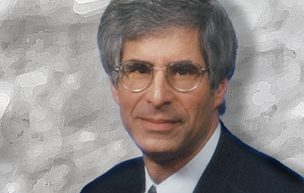Skipping school is supposed to be the sign of a troubled student. Now it’s the sign of a troubled planet.
Since the 1990s, scientific research has led to a clearer understanding of the human contribution to, and potentially disastrous consequences of, climate change, but it may require the voices of children to pressure adults into acting on that understanding before it’s too late.
A “climate strike,” which took place Sept. 20 in anticipation of last week’s United Nations Climate Change Summit, was part of a growing student-led international environmental protest movement. Millions of students around the world stayed out of school for a day and took to the streets to dramatize the need for immediate and decisive policy measures to address climate change.
The idea originated with Greta Thunberg, the preternaturally poised and articulate 16-year-old Swedish girl who has become the de facto spokesperson for the movement. She began staging solitary weekly protests outside the Swedish parliament building a year ago.
Invited to speak before a joint hearing of two U.S. Congressional committees on Sept. 18, Thunberg bluntly told legislators, “I don’t want you to listen to me. I want you to listen to the scientists. And I want you to unite behind the science. And then I want you to take real action.”
She was even more brutally honest when addressing political leaders at the U.N. Climate Summit last Monday. “You all come to us young people for hope. How dare you?” she challenged them. “You have stolen my dreams and my childhood with your empty words.”
Thunberg is spot on. Climate change is the greatest existential threat to human kind.
Yet most countries, especially China and the U.S., the world’s first and second largest emitters of the leading greenhouse gas, carbon dioxide, have barely admitted the existence of, let alone tackled, the problem.
Under President Donald Trump, the U.S., if anything, is moving backward on climate change. Trump withdrew the country from the 2016 Paris Climate Agreement, and his administration has moved to weaken Obama era rules aimed at curbing coal power plant stack emissions, controlling methane gas release from oil and gas drilling operations, and increasing auto mileage efficiency standards.
At the U.N. this week, China, which is responsible for about a quarter of the world’s carbon dioxide emissions, refused to put forward a more ambitious reduction goal than its previous commitment to the Paris Agreement.
It says a lot for Maine, but not a lot for the United States, that it was Gov. Janet Mills, rather than Trump, who addressed the U.N. Summit in support of climate change, informing the delegates that her state was planning to become carbon neutral by 2045.
Adults may cherish children but, on the whole, we tend to take them less than seriously on matters of great import. The popular comic strip “Zits” provides a hilarious perspective on the adult view of adolescents as self-absorbed, irresponsible and unrealistic.
Yet we do a disservice to children in general, and teenagers, in particular, by ignoring the issues they take most seriously. They are, in fact, the “canary in the coal mine,” a warning signal of things that have gone badly awry in society. After all, they’re the ones who are destined to live a lifetime with the consequences of their elders’ mistakes. This sense of being at risk, coupled with undiluted notions of right and wrong, often makes them more clear-headed about the future than adults.
It was young men and women of high school and college age, for instance, who provided both the leadership and foot soldiers for the Civil Rights Movement of the 1960s. They were the ones who participated in lunch counter sit-ins, freedom bus rides, protest marches, and voter registration drives throughout the South at great risk to their lives. And it was largely students whose incessant demonstrations finally forced an end to U.S. participation in the Vietnam War.
For a decade from 1966 to 1976, during the Cultural Revolution, millions of youth in China upended the Communist Party bureaucracy with a torrent of violent activism. Though the Cultural Revolution was cynically masterminded by Party Chairman Mao Zedong as a way of clinging to power in the face of resistance to his policies from an increasingly technocratic party leadership, it nonetheless dramatically demonstrated that young people could become an irresistible force for change. Decades later in 2014, a youthful pro-democracy protest movement in China so unnerved Communist Party officials that they brutally crushed it with military force in the Tiananmen Square Massacre. A similar protest movement is now sending shock waves through Hong Kong.
Even if U.S. political leaders don’t have the sense to listen to kids for the truth they speak, they should at least take their opinions seriously if they wish to win elections. The age group 15 to 24 constitutes about 13.6% percent of the population or almost 21.3 million out of a national population of 328.5 million. The next oldest cohort, 25 to 29, adds another 6.8% or 10.7 million people.
The under-30 age group, therefore represents a substantial and potentially powerful voting bloc. And, where it concerns climate change, they will probably be demanding to know, “How dare you?”
Send questions/comments to the editors.



Comments are no longer available on this story